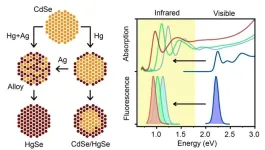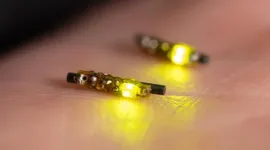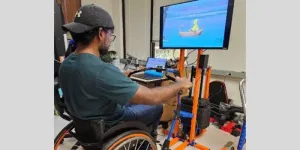Greater focus needed on how existing international law can prevent the increasing militarisation of outer space
2024-07-09
(Press-News.org) There is a pressing need for countries and international organisations to understand better how existing international law can help them address serious concerns about the militarisation of outer space, a new study says.
Space is an increasingly militarized domain, with the potential to be a source and place of armed conflict. Nations are testing anti-satellite (‘ASAT’) weapons and satellites are potentially attractive targets during armed conflict.
The new study, by Dr Chris O’Meara from the University of Exeter Law School, examines how the jus ad bellum, which is a body of law that regulates when states may lawfully use force, applies to ASAT weapons and to the right of states to use them in space. The study argues that jus ad bellum regulation of ASAT technologies addresses state concerns regarding protecting satellites and other space assets and avoiding conflict in space. It says a clearer understanding of this body of law will help decision makers and military planners avoid lawful acts of self-defence being characterized as unlawful.
Dr O’Meara said: “Space is increasingly important, militarised, and congested. States and international organisations like NATO and the UN are trying to work out how legal rules apply to space and what should happen if there’s conflict in that domain. This is not fantastical Star Wars territory; it is a necessary response to real concerns about future conflict in space. Countries are putting military weapons into space and this potential threat will continue into the future.”
“For now, it is clear we are not going to get a new weapons control treaty to respond to the fears of wars in space, so we will have to rely on existing rules from the UN Charter and customary international law and to think about how these existing rules apply above Earth. So far, there has been relatively little focus on the jus ad bellum, but my view is that we do have this existing toolkit, a body of law which applies and which sets out standards of conduct, but we need to better understand how it works in space. A better appreciation of the law is a big part of the answer.”
“In the absence of a multilateral ASAT weapons control treaty, the jus ad bellum, alongside international humanitarian law, must be regarded as an essential part of the international law framework limiting their use.”
“A clearer understanding of jus ad bellum requirements could directly address pressing international concerns regarding the weaponization of space and the fear of wars between states in that domain.”
The study says adherence to jus ad bellum helps to avoid conflict and the escalation of conflict in space and has the potential to limit ASAT weapon deployment. Compliance underpins international peace and security and safeguards space for peaceful purposes and ensuring its valuable resources continue to benefit all mankind.
END
ELSE PRESS RELEASES FROM THIS DATE:
2024-07-09
A international team of astronomers led by Université de Montréal has made an exciting discovery about the temperate exoplanet LHS 1140 b: it could be a promising "super-Earth" covered in ice or water.
When the exoplanet LHS 1140 b was first discovered, astronomers speculated that it might be a mini-Neptune: an essentially gaseous planet, but very small in size compared to Neptune. But after analyzing data from the James Webb Space Telescope (JWST) collected in December 2023 - combined with previous data from other space telescopes such as Spitzer, Hubble and ...
2024-07-09
SAN FRANCISCO, CA—Genome editing has become a widely adopted technology to modify DNA in cells, allowing scientists to study diseases in the lab and develop therapies that repair disease-causing mutations. However, with current approaches, it’s only possible to edit cells in one location at a time.
Now, a team of scientists at Gladstone Institutes has developed a new method that enables them to make precise edits in multiple locations within a cell—all at once. Using molecules called retrons, they created a tool that can efficiently modify DNA in bacteria, yeast, and human cells.
“We wanted to push the boundaries of genomic technologies ...
2024-07-09
Awarded the 2023 Nobel Prize in Chemistry, quantum dots have a wide variety of applications ranging from displays and LED lights to chemical reaction catalysis and bioimaging. These semiconductor nanocrystals are so small—on the order of nanometers—that their properties, such as color, are size dependent, and they start to exhibit quantum properties. This technology has been really well developed, but only in the visible spectrum, leaving untapped opportunities for technologies in both the ultraviolet and infrared regions of the electromagnetic ...
2024-07-09
Certain types of light have proven to be an effective, minimally invasive treatment for cancers located on or near the skin when combined with a light-activated drug. But deep-seated cancers, surrounded by tissue, blood and bone, have been beyond the reach of light’s therapeutic effects.
To bring light’s benefits to these harder-to-access cancers, engineers and scientists at the University of Notre Dame have devised a wireless LED device that can be implanted. This device, when combined with a light-sensitive ...
2024-07-09
While food insecurity has long been the focus of local and national policymakers and researchers, nutrition insecurity has largely been overlooked. A new study by the Institute for Food System Equity (IFSE) at the USC Dornsife College of Letters, Arts and Sciences aims to change that.
This is the first study in Los Angeles County to identify the populations most affected by nutrition insecurity, distinct from food insecurity. Nutrition insecurity refers to a lack of access to healthy food that ...
2024-07-09
AI can help humanitarians gain crucial insights to better monitor and anticipate risks, such as a conflict outbreak or escalation. But deploying systems in this context is not without risks for those affected, a new study warns.
Humanitarian organisations have been increasingly using digital technologies and the Covid-19 pandemic has accelerated this trend.
AI-supported disaster mapping was used in Mozambique to speed up emergency response, and AI systems were used to predict food crisis and rolled out by the World Bank across twenty-one countries.
But the study warns some uses of AI may expose people to additional harms and present significant ...
2024-07-09
The Speech Accessibility Project is partnering with several organizations who serve people with cerebral palsy as it recruits more participants for its speech recognition technology work. They include ADAPT Community Network, the Cerebral Palsy Foundation and CP Unlimited.
The project is recruiting U.S. and Puerto Rican adults with cerebral palsy, amyotrophic lateral sclerosis, Down syndrome, Parkinson’s and those who have had a stroke. Funded by Big ...
2024-07-09
The Office of the Vice President for Research and Innovation at The University of Texas at Arlington has awarded seven Interdisciplinary Research Program (IRP) grants totaling nearly $140,000 to foster collaboration between groups that do not typically work together. This represents an increase in funding of 40% over the grants awarded in 2023.
“UT Arlington has increased its support of interdisciplinary research as we know that many of today’s great societal challenges ...
2024-07-09
CAMBRIDGE, MA — A new tool makes it easier for database users to perform complicated statistical analyses of tabular data without the need to know what is going on behind the scenes.
GenSQL, a generative AI system for databases, could help users make predictions, detect anomalies, guess missing values, fix errors, or generate synthetic data with just a few keystrokes.
For instance, if the system were used to analyze medical data from a patient who has always had high blood pressure, it could catch a blood pressure reading that ...
2024-07-09
Despite decades of research, there’s still much scholars don’t understand about life’s beginnings and early evolution. A UC Riverside paper has opened the door to understanding more and to framing future studies that could help predict climate change and search for life beyond Earth.
“This paper strives to inform the Earth sciences community where the research needs to go next,” said Christopher Tino, a UCR PhD candidate during the time of research and a first author.
Many studies have explored signs ...
LAST 30 PRESS RELEASES:
[Press-News.org] Greater focus needed on how existing international law can prevent the increasing militarisation of outer space





